
Automotive manufacturer Ford (NYSE: F) beat Wall Street’s revenue expectations in Q2 CY2025, with sales up 5% year on year to $50.18 billion. Its non-GAAP profit of $0.37 per share was 11.1% above analysts’ consensus estimates.
Is now the time to buy Ford? Find out by accessing our full research report, it’s free.
Ford (F) Q2 CY2025 Highlights:
- Revenue: $50.18 billion vs analyst estimates of $46.55 billion (5% year-on-year growth, 7.8% beat)
- Adjusted EPS: $0.37 vs analyst estimates of $0.33 (11.1% beat)
- Reinstates full-year guidance, which it had withdrawn in May due to tariffs, includes a net $2 billion headwind from tariffs
- Operating Margin: 1%, down from 3.9% in the same quarter last year
- Free Cash Flow Margin: 8.4%, up from 7.1% in the same quarter last year
- Sales Volumes rose 3.8% year on year (2.1% in the same quarter last year)
- Market Capitalization: $43.23 billion
Company Overview
Established to make automobiles accessible to a broader segment of the population, Ford (NYSE: F) designs, manufactures, and sells a variety of automobiles, trucks, and electric vehicles.
Revenue Growth
A company’s long-term sales performance can indicate its overall quality. Any business can experience short-term success, but top-performing ones enjoy sustained growth for years. Regrettably, Ford’s sales grew at a mediocre 7.3% compounded annual growth rate over the last five years. This was below our standard for the industrials sector and is a tough starting point for our analysis.
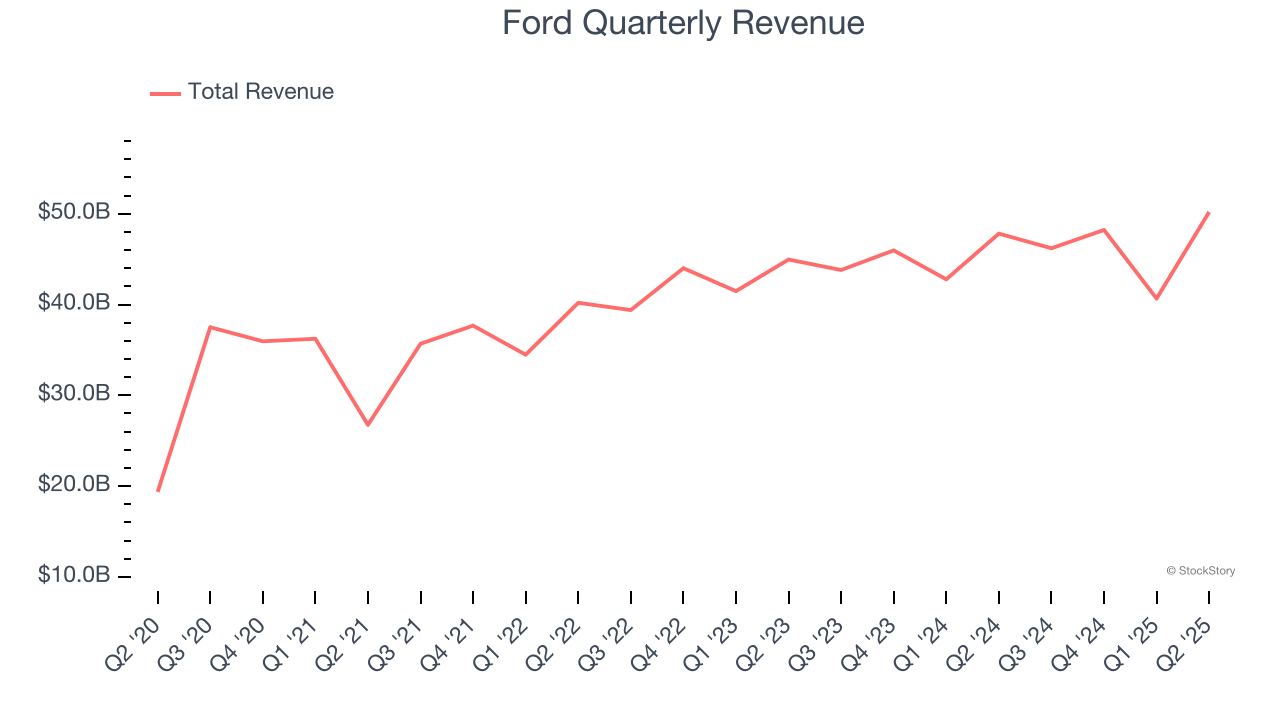
Long-term growth is the most important, but within industrials, a half-decade historical view may miss new industry trends or demand cycles. Ford’s recent performance shows its demand has slowed as its annualized revenue growth of 4.4% over the last two years was below its five-year trend. 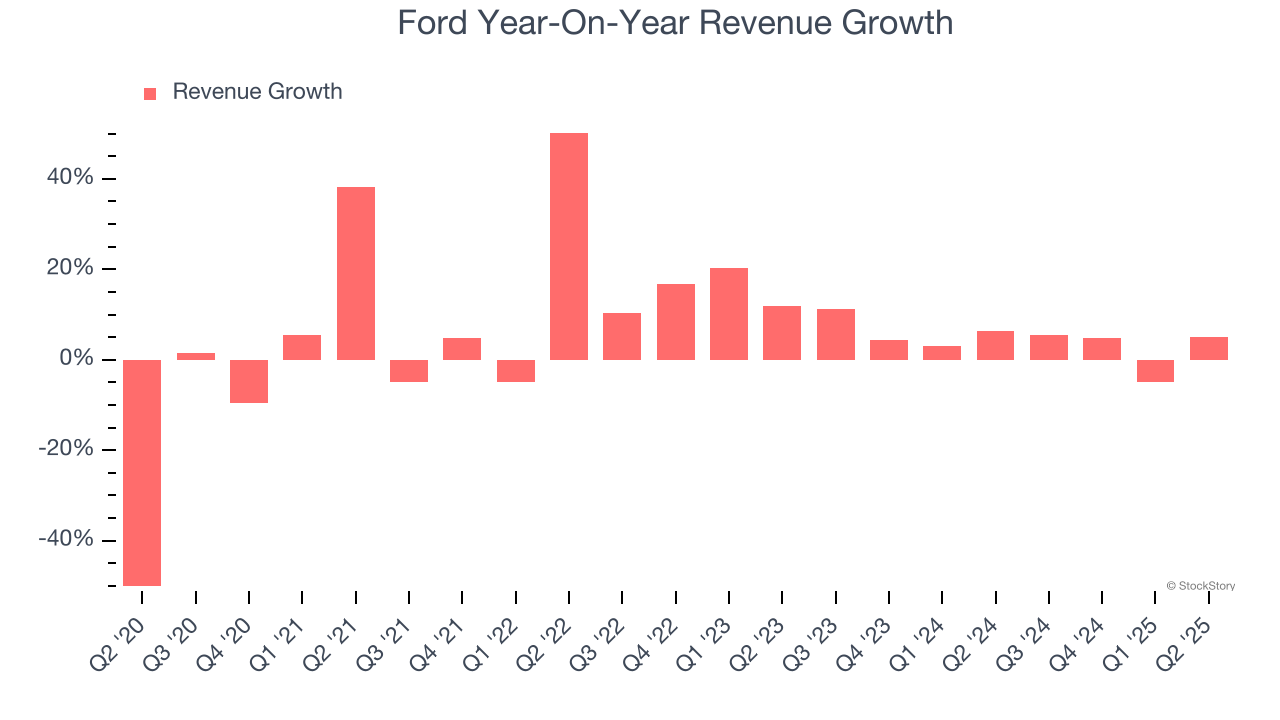
We can better understand the company’s revenue dynamics by analyzing its number of vehicles sold, which reached 1.19 million in the latest quarter. Over the last two years, Ford’s vehicles sold were flat. Because this number is lower than its revenue growth, we can see the company benefited from price increases. 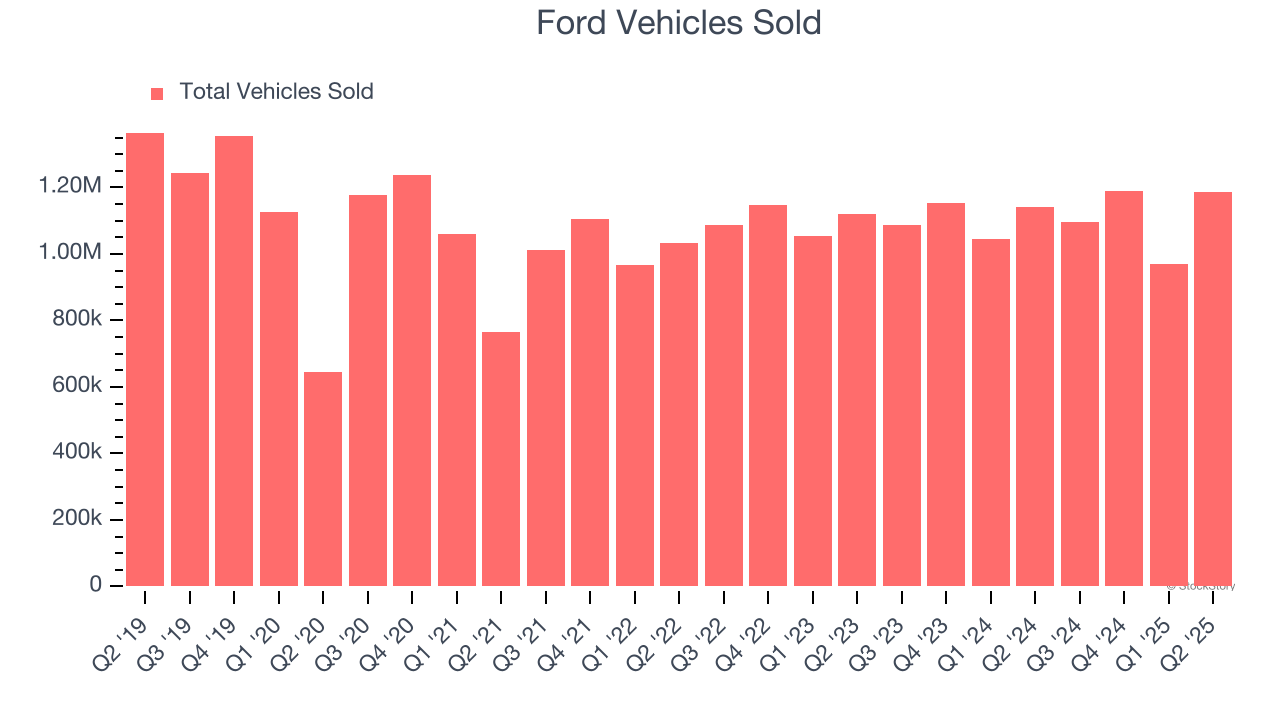
This quarter, Ford reported modest year-on-year revenue growth of 5% but beat Wall Street’s estimates by 7.8%.
Looking ahead, sell-side analysts expect revenue to decline by 3.9% over the next 12 months, a deceleration versus the last two years. This projection doesn't excite us and implies its products and services will face some demand challenges.
Unless you’ve been living under a rock, it should be obvious by now that generative AI is going to have a huge impact on how large corporations do business. While Nvidia and AMD are trading close to all-time highs, we prefer a lesser-known (but still profitable) stock benefiting from the rise of AI. Click here to access our free report one of our favorites growth stories.
Operating Margin
Operating margin is one of the best measures of profitability because it tells us how much money a company takes home after procuring and manufacturing its products, marketing and selling those products, and most importantly, keeping them relevant through research and development.
Ford’s operating margin might fluctuated slightly over the last 12 months but has generally stayed the same, averaging 2.7% over the last five years. This profitability was lousy for an industrials business and caused by its suboptimal cost structureand low gross margin.
Looking at the trend in its profitability, Ford’s operating margin might fluctuated slightly but has generally stayed the same over the last five years. This raises questions about the company’s expense base because its revenue growth should have given it leverage on its fixed costs, resulting in better economies of scale and profitability.
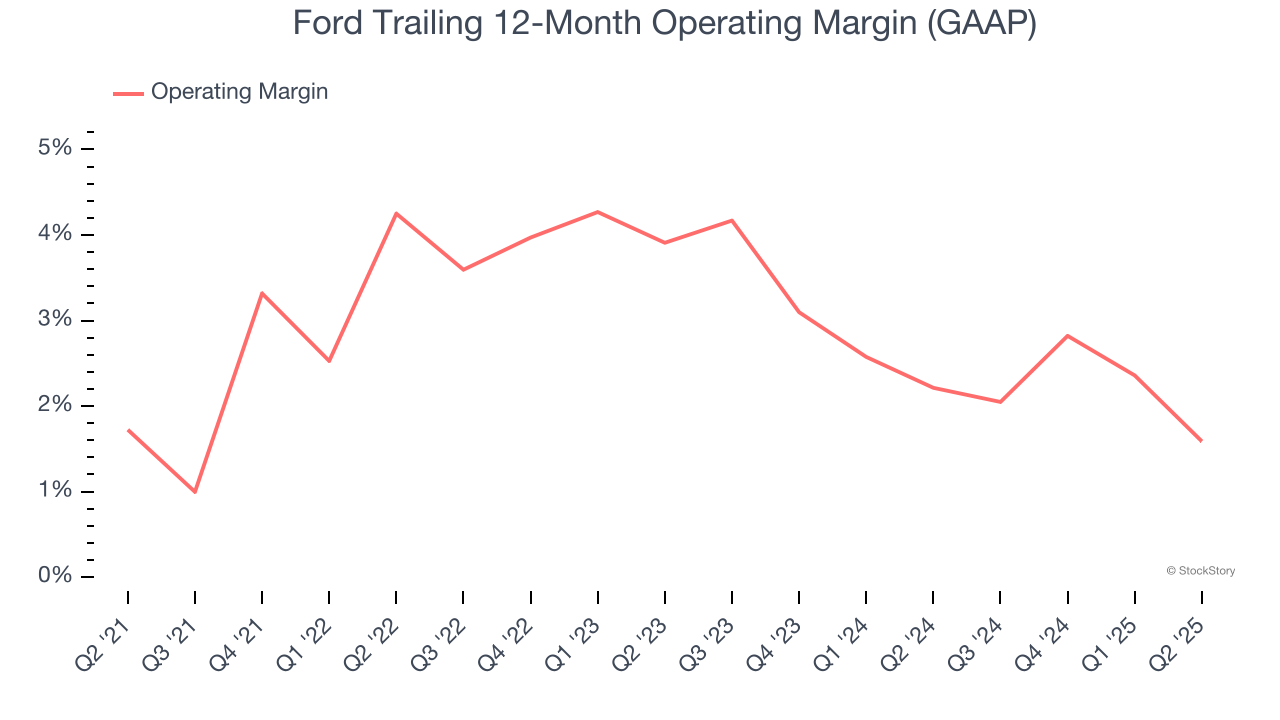
This quarter, Ford generated an operating margin profit margin of 1%, down 2.9 percentage points year on year. Conversely, its revenue and gross margin actually rose, so we can assume it was less efficient because its operating expenses like marketing, R&D, and administrative overhead grew faster than its revenue.
Earnings Per Share
We track the long-term change in earnings per share (EPS) for the same reason as long-term revenue growth. Compared to revenue, however, EPS highlights whether a company’s growth is profitable.
Ford’s full-year EPS flipped from negative to positive over the last five years. This is encouraging and shows it’s at a critical moment in its life.
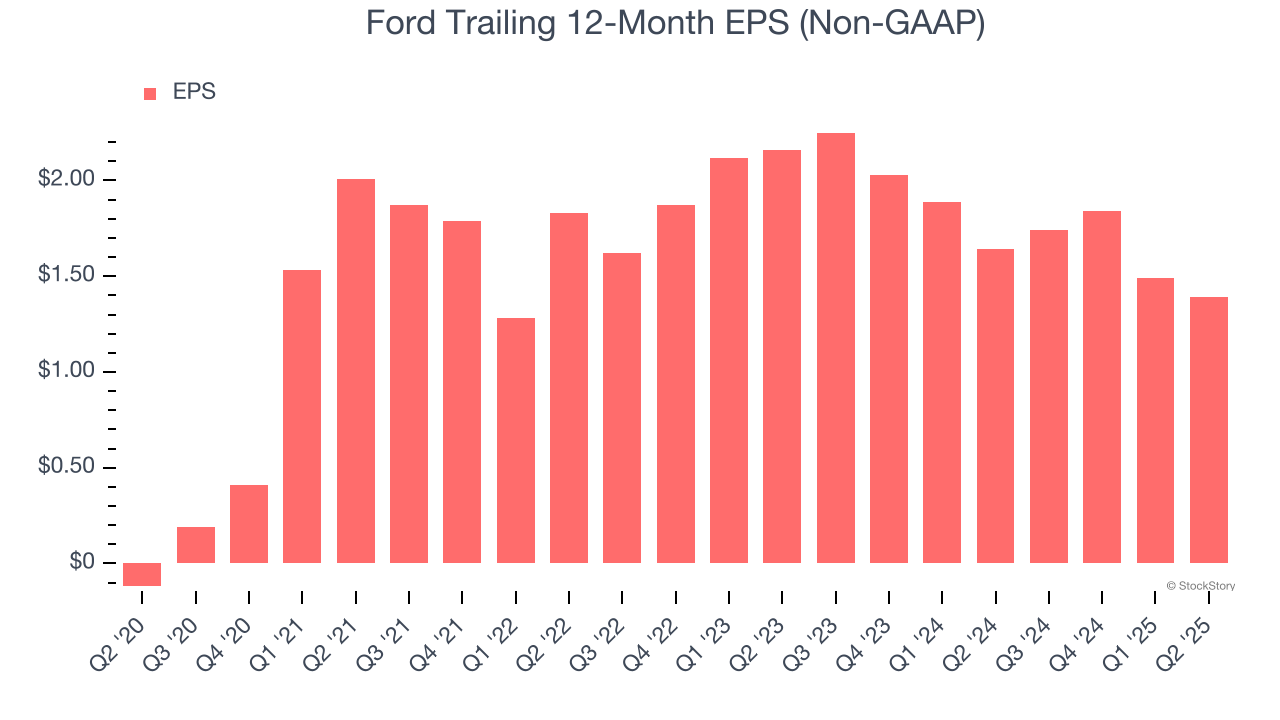
Like with revenue, we analyze EPS over a more recent period because it can provide insight into an emerging theme or development for the business.
Sadly for Ford, its EPS declined by 19.8% annually over the last two years while its revenue grew by 4.4%. This tells us the company became less profitable on a per-share basis as it expanded.
We can take a deeper look into Ford’s earnings to better understand the drivers of its performance. Ford’s operating margin has declined by 4.5 percentage points over the last two years. This was the most relevant factor (aside from the revenue impact) behind its lower earnings; interest expenses and taxes can also affect EPS but don’t tell us as much about a company’s fundamentals.
In Q2, Ford reported adjusted EPS at $0.37, down from $0.47 in the same quarter last year. Despite falling year on year, this print easily cleared analysts’ estimates. Over the next 12 months, Wall Street expects Ford’s full-year EPS of $1.39 to shrink by 6.5%.
Key Takeaways from Ford’s Q2 Results
We were impressed by how significantly Ford blew past analysts’ sales volume expectations this quarter. We were also excited its revenue outperformed Wall Street’s estimates by a wide margin. On the other hand, the company's new guidance includes adjusted operating profit of $6.5 billion to $7.5 billion, lower than the pre-tariff range it issued in February of $7 billion to $8.5 billion. The stock traded down 2.8% to $10.60 immediately after reporting.
Should you buy the stock or not? If you’re making that decision, you should consider the bigger picture of valuation, business qualities, as well as the latest earnings. We cover that in our actionable full research report which you can read here, it’s free.







